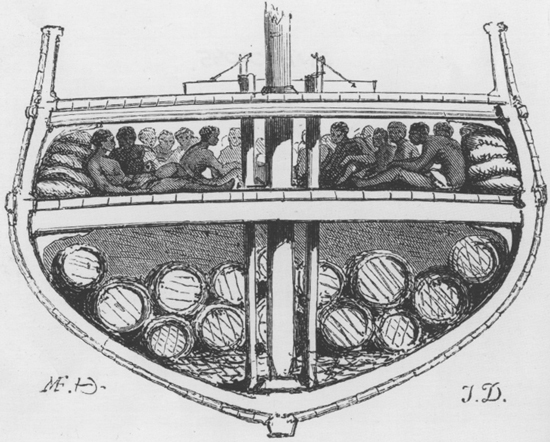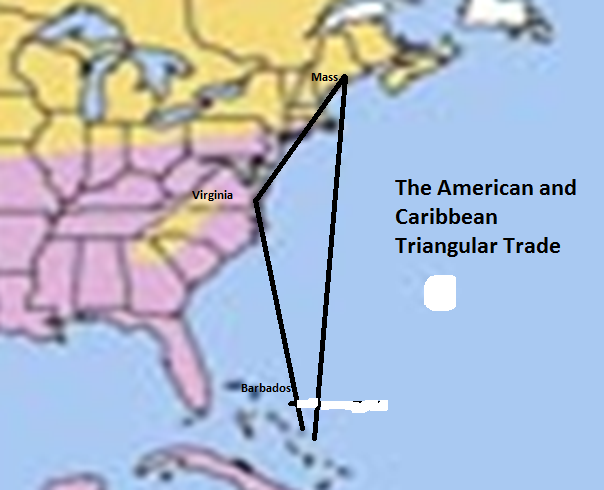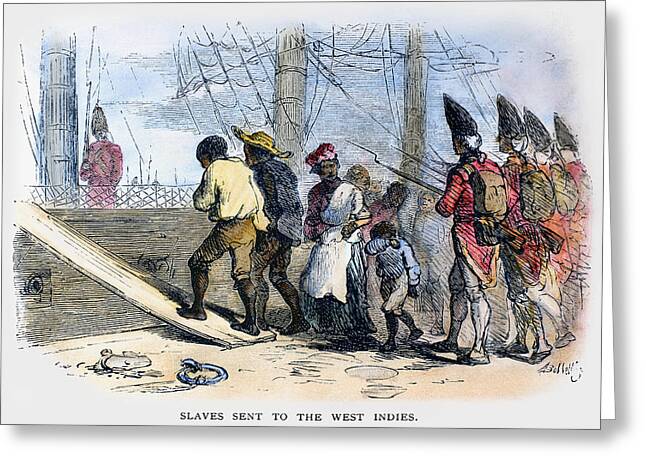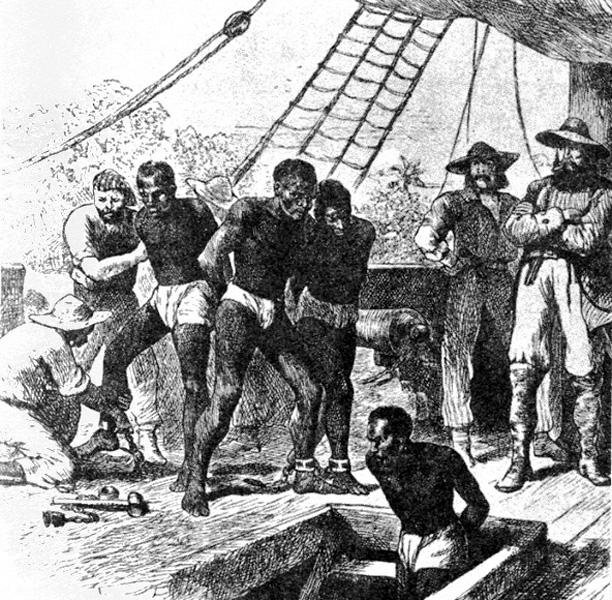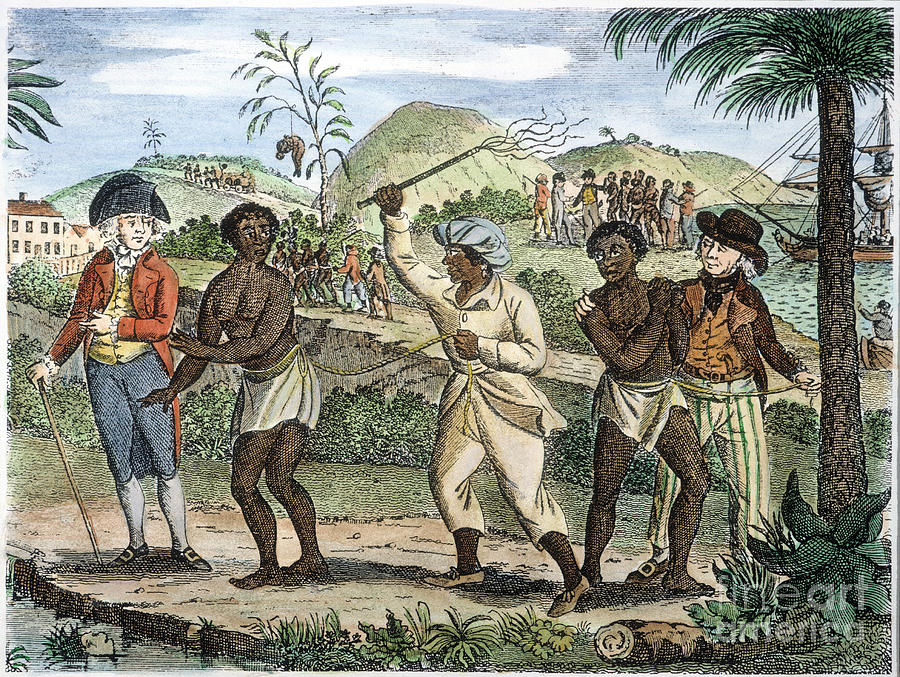quote:
Genetic and paleoanthropological evidence is in accord that today’s human population is the result of a great demic (demographic and geographic) expansion that began approximately 45,000 to 60,000 y ago in Africa and rapidly resulted in human occupation of almost all of the Earth’s habitable regions. Genomic data from contemporary humans suggest that this expansion was accompanied by a continuous loss of genetic diversity, a result of what is called the “serial founder effect.” In addition to genomic data, the serial founder effect model is now supported by the genetics of human parasites, morphology, and linguistics. This particular population history gave rise to the two defining features of genetic variation in humans: genomes from the substructured populations of Africa retain an exceptional number of unique variants, and there is a dramatic reduction in genetic diversity within populations living outside of Africa. These two patterns are relevant for medical genetic studies mapping genotypes to phenotypes and for inferring the power of natural selection in human history. It should be appreciated that the initial expansion and subsequent serial founder effect were determined by demographic and sociocultural factors associated with hunter-gatherer populations. How do we reconcile this major demic expansion with the population stability that followed for thousands years until the inventions of agriculture? We review advances in understanding the genetic diversity within Africa and the great human expansion out of Africa and offer hypotheses that can help to establish a more synthetic view of modern human evolution.
- human population growth
- hunter-gatherer demography
- molecular evolution
Genetic data indicate that, approximately 45 to 60 kya, a very rapid population expansion occurred outside of Africa, and spread in all directions across the Eurasian continents, eventually populating the entire world. We dub this event the Great Expansion (Fig. 1). The precise location of the exit from Africa, and the relative timing of the southern coastal migration vs. the expansion into northern Eurasia, are still under intense debate (1⇓–3). However, as we discuss here, many parameters of the Great Expansion are now well understood, including the general timing of the exit, the magnitude of the associated bottleneck, and the mode of subsequent expansion. We review the history of the Out of Africa (OOA) expansion, with an emphasis on recent genomic data, and highlight future avenues of research.

Fig. 1.
Ancient dispersal patterns of modern humans during the past 100,000 y. This map highlights demic events that began with a source population in southern Africa 60 to 100 kya and conclude with the settlement of South America approximately 12 to 14 kya. Wide arrows indicate major founder events during the demographic expansion into different continental regions. Colored arcs indicate the putative source for each of these founder events. Thin arrows indicate potential migration paths. Many additional migrations occurred during the Holocene (11).
It is important first to distinguish between the presence of early near-modern humans in the Near East and the very distinct OOA exit associated with the Great Expansion. It is clear that anatomically near-modern humans occupied the Levant (4) during a warm interglacial period 130 to 80 kya, when this region was ecologically similar to northeastern Africa (5). However, current evidence indicates that this near-modern population did not persist in the Near East and was subsequently replaced by Neanderthals during the following glacial period, with little evidence of temporal overlap (5, 6). It is not until at least 50,000 y ago that evidence of behaviorally modern humans occurs in the archaeological record in the Near East. Only after this point do anatomically and behaviorally modern human remains become widespread in Eurasia. It is unclear what precipitated the tremendous population growth associated with this second occupation of the Near East and subsequent dispersal (7); possibly, cultural advances accumulated to a “tipping point” that supported extreme demographic growth (8), or anatomical changes that are not reflected in the paleoanthropological record [e.g., neuroanatomy (9)] occurred in the ancestral population. The geographic range expansions of humans outside of Africa were almost certainly associated with climatic fluctuations (10); however, the Great Expansion was an unprecedented demic success that occurred when the climate remained substantially colder than the previous interglacial. As discussed later, we know that the ancestral population for this expansion was African, but the rate of growth and structure of the ancestral population remain poorly understood.
[...]

Fig. 2.
Schematic of a serial found effect. We illustrate the effect of serial founder events on genetic diversity in the context of the OOA expansion. Colored dots indicate genetic diversity. Each new group outside of Africa represents a sampling of the genetic diversity present in its founder population. The ancestral population in Africa was sufficiently large to build up and retain substantial genetic diversity.
The third assumption is that there have been no dramatic postexpansion bottlenecks that differentially affected populations from which the serial migration began. If the source population for the expansion suffered a severe bottleneck that reduced its genetic diversity, we should see a poorer linear fit to the decline of heterozygosity with distance from Africa, or erroneously assign a population with higher genetic diversity as the source population. It is this third assumption we believe deserves additional consideration.
[...]
Brenna M. Henn,
L. L. Cavalli-Sforzaa,1, and
Marcus W. Feldmanb,2
Edited by C. Owen Lovejoy, Kent State University, Kent, OH, and approved September 25, 2012 (received for review July 19, 2012)
http://www.pnas.org/content/109/44/17758.full
This idea of diversity is correct, but it is probably not due to "genetic drift, isolation and random mutations ". First of all there is no such thing as "random mutation". Genetic drift could have influenced some hypothetical populations, but the diversity among African people is probably due to different origins for each African/Black population (Khoisan, Pygmy, etc) and later mating among the diverse Black populations. Just as there formerly existed homo erectus, homo habilis etc., there was homo australian, homo khoisan, homo pgymy and homo Sub-Saharan African. This view is supported by the skeletal history of anatomically modern humans in Africa.
Thusly, there was more than one out of Africa (OoA) event in which Black people left Africa. The first OoA event was led by homo Australians who left Africa sometime before 100kya, homo Khoisan 45kya, homo pygmy 15kya and finally homo Sub-Saharan Africans 6kya.
This is the only way to explain African diversity. Henn's models for the "Great Expnasion" lack any foundadtion because he is modeling a hypothetical OoA event in which there was a single 'Great Expansion', when there is no evidence that the so-called Caucasian and Mongoloid populations existed anywhere on earth before 6kya. The first Caucasian skeletons do not appear in the archaeological record before 1500BC, Classical Mongoloids (Indonesian,Japanese, Filipino type) around 4000BC, and contemporary East Asian (Chinese, Korean) 1000BC. The late appearance of these populations, and the record of different African populations originating at different times in history provides no support to Henn's 'Great Expansion' theory. It lacks congurence because the theory is based on the idea of the constancy of habitation of the various contemporary populations in the regions they now inhabit, when the historical and archaeological records fail to support any analogy between the present location of populations in the Americas, Eurasia, and even Africa to the populations that inhabited these regions hundreds, let alone thousands of years ago. This lack of analogy is due to population shifts resulting from migrations and war. These factors would have been the major influence on genetic shifts, instead of isolation, genetic drift and genetic mutation.
The fact remains that Naia's DNA was contaminated and Kennewick man carries the African haplogroup X. Moreover Kennewick man is more related to Africans, Andamanese and Melanesians, rather than mongoloid Native Americans craniometrically and genetically.
The Kennewick Man DNA article makes it clear that Kennewick man is recognized as a PaleoAmerican therefore he has negro ancestry. The researchers claim the Kennewick man’s DNA is mainly related to Native Americans living in South America, rather than North America except for the Colville people on the West Coast. The researchers wrote
quote:
“Despite this similarity, Anzick-1 and Kennewick Man have dissimilar genetic affinities to contemporary Native Americans. In particular, we find that Anzick-1 is more closely related to Central/Southern Native Americans than is Kennewick Man (Extended Data Fig. 5). The pattern observed in Kennewick Man is mirrored in the Colville, who also show a high affinity with Southern populations (Fig. 2c), but are most closely related to a neighbouring population in the data set (Stswecem’c; Extended Data Fig. 4c).”
The authors also noted that:
“However, the genetic affinities of Kennewick Man reveal additional complexity in the population history of the Northern lineage. The finding that Kennewick is more closely related to Southern than many Northern Native Americans (Extended Data Fig. 4) suggests the presence of an additional Northern lineage that diverged from the common ancestral population of Anzick-1 and Southern Native Americans (Fig. 3). This branch would include both Colville and other tribes of the Pacific Northwest such as the Stswecem’c, who also appear symmetric to Kennewick with Southern Native Americans (Extended Data Fig. 4).”
The Native Americans on the Pacific coast were a mixture of mongoloid and Pacific Island negro Native Americans.
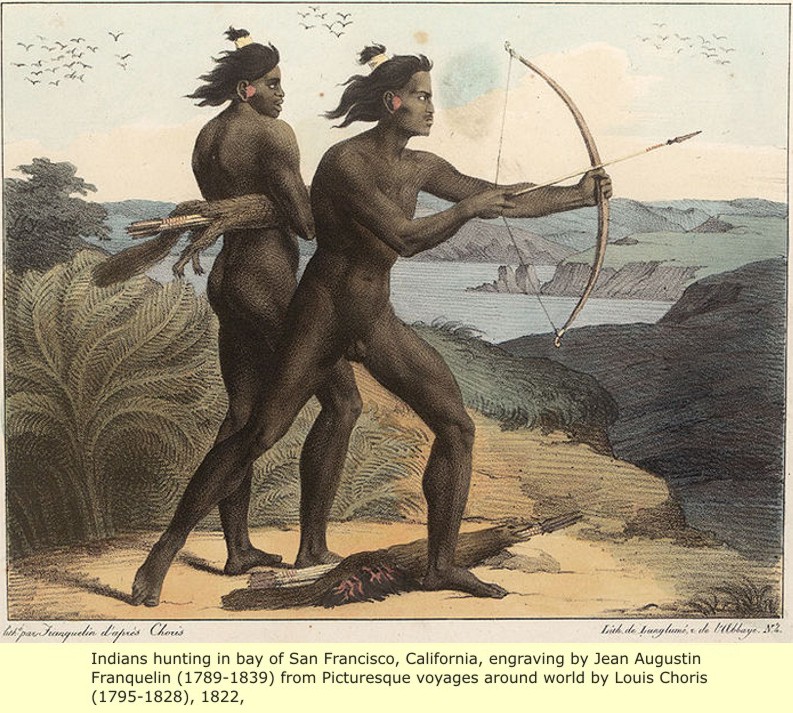
The Colville tribe which is related to Kennewick man is a Confederation of Indians who did not die of diseases or murdered by whites so they could take their land.
The Colville tribe is the name given to various Christian Native American tribes that lived at Fort Colville. They include Native American groups that were not exterminated by the whites. The twelve Colville bands are the Methow, Okanogan, Arrow Lakes, Sanpoil, Colville, Nespelem, Chelan, Entiat, Moses-Columbia, Wenatchi, Nez Perce, and Palus. These remnants of Pacific coast tribes formerly mixed with the Black Native Americans this is obvious when we look at Ohlone people who lived in missions on the West Coast.

This means that the Colville tribe is admixed with the Black Native American tribes that formerly dominated the Pacific coast.
The authors of the article, attempt to lie about the negro origin of Kennewick man, the multivariate analysis of Kennewick man’s skull does not support their conclusion. The carniometric measurements also confirm the negro origin of Kennewick man. The researchers wrote:
quote:
Although our individual-based craniometric analyses confirm that Kennewick Man tends to be more similar to Polynesian and Ainu peoples than to Native Americans, Kennewick Man’s pattern of craniometric affinity falls well within the range of affinity patterns evaluated for individual Native Americans (Supplementary Information 9). For example, the Arikara from North Dakota (the Native American tribe representing the geographically closest population in Howells’ data set to Kennewick), exhibit with high frequency closest affinities with Polynesians (Supplementary Information 9). Yet, the Arikara have typical Native-American mitochondrial DNA haplogroups30, as does Kennewick Man. We conclude that the currently available number of independent phenetic markers is too small, and within-population craniometric variation too large, to permit reliable reconstruction of the biological population affinities of Kennewick Man.
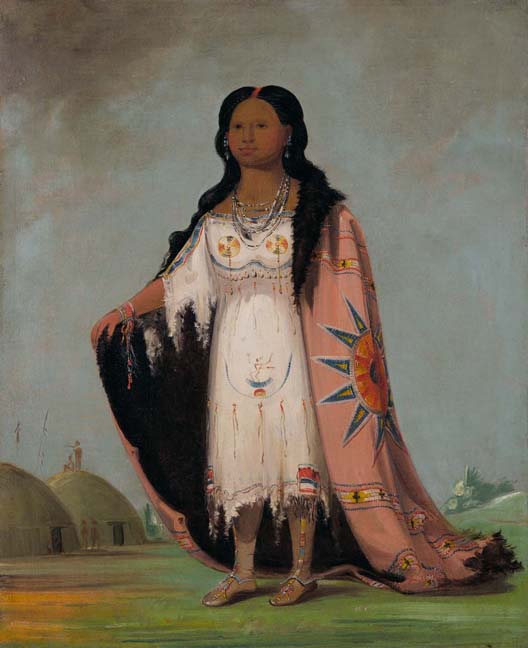
Arikara

Kennewick man carried mtDNA haplogroup X, this haplogroup is rare among United States Indians. This haplogroup is carried by Africans.
Amerindians carry the X hg. Amerindians and the European hg X are different (Person, 2004). Haplogroup X has also been found throughout Africa (Shimada et al,2007). Shimada et al (2007) believes that X(hX) is of African origin. Amerindian X is different from European hg X, skeletons from Brazil dating between 400-7000 BP have the transition np 16223 ( Martinez-Cruzado, 2001). Transition np 16223 is characteristic of African haplogroups. This suggest that Africans may have taken the X hg to the Americas in ancient times. This transference is supported by the haplogroups carried by Kennewick man.
References:
Brooke Persons, Genetic Analysis and the Peopling of the New World ANT 570, November 9, 2004. http://74.125.95.104/search?q=cache:2g9_ETY1V38J:www.as.ua.edu/ant/bindon/ant570/Papers/Persons.pdf+haplotype+X&hl=en&ct=clnk&cd=4&gl=us
Martinez-Cruzado, J C, Toro-Labrador, G, Ho-Fung, V, Estevez-Montero, M A, Et al (2001). Mitochondrial DNA analysis reveals substanial Native American ancestry in Puerto Rico,Human Biology, Aug 2001
Makoto K. Shimada*, , Karuna Panchapakesan , Sarah A. Tishkoff , Alejandro Q. Nato, Jr* and Jody HeY, Divergent Haplotypes and Human History as Reveaed in a Worldwide Survey of X-Linked DNA Sequence Variation, Molecular Biology and Evolution 2007 24(3):687-698
Naia is suppose to be carrying haplogroup D,some researchers claim she is a modern Mongoloid Native American eventhough her cranifacial morphology is Australian, Melanesia or African.
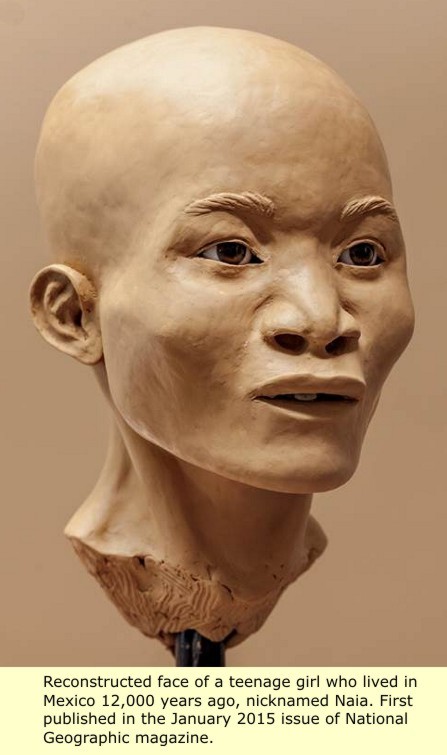 We don't really know if Naia is a carrier of haplogroup D, instead of M, which is a common haplogroup in Africa. Prufer and Meyer in a : Comment on “Late Pleistocene human skeleton and mtDNA link Paleoamericans and modern Native Americans”, claim Naia's DNA is contaminated. Prufer and Mayer (2015) believe that due to post mortem damage Naia’s DNA was contaminated and does not represent ancient DNA. They said: However, our analysis of postmortem damage patterns finds no evidence for an ancient origin of these sequences. "See:Prufer K and Meyer M (2015). Comment on Late Pleistocene human skeletons and mtDNA linkPaleoamericans and modern Native Americans. Science 20 835. http://www.sciencemag.org/content/347/6224/835.1.full
We don't really know if Naia is a carrier of haplogroup D, instead of M, which is a common haplogroup in Africa. Prufer and Meyer in a : Comment on “Late Pleistocene human skeleton and mtDNA link Paleoamericans and modern Native Americans”, claim Naia's DNA is contaminated. Prufer and Mayer (2015) believe that due to post mortem damage Naia’s DNA was contaminated and does not represent ancient DNA. They said: However, our analysis of postmortem damage patterns finds no evidence for an ancient origin of these sequences. "See:Prufer K and Meyer M (2015). Comment on Late Pleistocene human skeletons and mtDNA linkPaleoamericans and modern Native Americans. Science 20 835. http://www.sciencemag.org/content/347/6224/835.1.full
Raghavan, M. et al 2015 “Genomic evidence for the Pleistocene and recent population history of Native Americans,
”http://www.researchgate.net/publication/280841721_Genomic_evidence_for_the_Pleistocene_and_recent_population_history_of_Native_Americans argue that there is continuity between modern Native Americans and the paleoamericans.
Raghavan et al (2015), provide abundant double-speech that is truly misleading and outright lies. Neves et al has made it clear that there is a difference between Paleoamericans who were Negroid, and contemporary Indians that are mongoloid. Raghavan et al (2015) are attempting to prove that there is continuity between the contemporary mongoloid Indians and paleoamericans. In the conclusion of the article the authors write:
quote:
The data presented here are consistent with a single initial
migration of all Native Americans and with later gene
flow from sources related to East Asians and, more distantly,
Australo-Melanesians. From that single migration, there
was a diversification of ancestral Native Americans leading
to the formation of ‘northern’ and ‘southern’ branches,
which appears to have taken place ca. 13 KYA within the
Americas.
Although this is their conclusion, the findings in the article reveal a different story. They contradict themselves throughout in Raghavan, M. et al 2015 “Genomic evidence for the Pleistocene and recent population history of Native Americans,”http://www.researchgate.net/publication/280841721_Genomic_evidence_for_the_Pleistocene_and_recent_population_history_of_Native_Americans
Raghaven et al, noted that
quote:
” We, therefore, sequenced 17 ancient individuals affiliated to the now-extinct Pericúes from Mexico and FuegoPatagonians from Chile and Argentina (28), who, on the basis of their distinctive skull morphologies, are claimed to be relicts of Paleoamericans (23, 27, 58, 59). Additionally, we sequenced two pre-Columbian mummies from northern Mexico (Sierra Tarahumara) to serve as morphological controls, since they are expected to fall within the range of Native American morphological cranial variation (28). We found that the ancient samples cluster with other Native American groups and are outside the range of Oceanian genetic variation (28) (Fig. 5 and figs. S32, S33, and S34). Similarly, outgroup f3 statistics (47) reveal low shared genetic ancestry between the ancient samples and Oceanians (28) (Figs. S36, S37), and genome-based and masked SNP chip genotype data-based D-statistics (46, 47) show no evidence for gene flow from Oceanians into the Pericúes or FuegoPatagonians (28) (fig. S39).”
This was not a surprising finding because none of these skeletal remains date back to Paleoamerican times.
Raghaven et al, write
quote:
Consequently, for the Fuego-Patagonians, the female Pericúes and the Lagoa Santa Paleoamerican sample, we were not able to replicate previous results (24) that report close similarity of Paleoamerican and AustraloMelanesian cranial morphologies. We note that male Pericúes samples displayed more craniometric affinities with populations from Africa and Australia relative to the female individuals of their population (fig. S41). The results of analyses based on craniometric data are, thus, highly sensitive to sample structure and the statistical approach and data filtering used (51). Our morphometric analyses suggest that these ancient samples are not true relicts of a distinct migration, as claimed, and hence do not support the Paleoamerican model. Similarly, our genomic data also provide
no support for an early migration of populations directly related to Australo-Melanesians into the Americas.
This statement is double speech, the authors declare that there is ” no support for an early migration of populations directly related to Australo-Melanesians into the Americas “ ; while in the same “paragraph the authors say ” We note that male Pericúes samples displayed more craniometric affinities with populations from Africa and Australia relative to the female individuals of their population “. If the “craniometric affinities [are] with populations from Africa and Australia “, this is support for an early migration of populations directly related to Australo-Melanesians into the Americas, and directly contradict what the authors have written.
Moreover, the paintings of California Indians show a clear Melanesian influence.
. 

.

Raghaven et al, also note that
quote:
We found that some American populations, including the Aleutian Islanders, Surui, and Athabascans are closer to Australo-Melanesians compared to other Native Americans,such as North American Ojibwa, Cree and Algonquin, and the South American Purepecha, Arhuaco and Wayuu (fig.S10). The Surui are, in fact, one of closest Native American populations to East Asians and Australo-Melanesians, the latter including Papuans, non-Papuan Melanesians, Solomon Islanders, and South East Asian hunter-gatherers such as Aeta (fig. S10). We acknowledge that this observation is based on the analysis of a small fraction of the whole genome and SNP chip genotype datasets, especially for the
Aleutian Islander data that is heavily masked due to recent admixture with Europeans (28), and that the trends in the data are weak.
Nonetheless, if it proves correct, these results suggest there may be a distant Old World signal related to AustraloMelanesians and East Asians in some Native Americans. The widely scattered and differential affinity of Native Americans to the Australo-Melanesians, ranging from a strong signal in the Surui to much weaker signal in northern Amerindians such as Ojibwa, points to this gene flow occurring after the initial peopling by Native American ancestors.
In conclusion, Raghaven et al, argue that there is continuity between the contemporary and modern Native American populations but the evidence they present for this hypothesis fails to support this hypothesis. It appears that the craniometrics evidence and genetic evidence does not agree, and the contemporary and modern Native Americans represent distinct populations as suggested by Neves.
I believe that 100% of Afro-Americans have Black Native American heritage. This results from the fact that the slaves on the plantations when Africans came to America were already Black Native Americans (BNA).
The BNA mated with the African slaves. The white racists to made sure they took the BNA lands often ignored the treaties they made with the BNA from New England down to Florida, by taking the BNA tribesmen captured after a War and enslaving them, while the BNA not enslaved was given the Bible, made Christian, and labled "free colored".
Over time, the freed African slaves were also forced to live in the "free colored" communities". In the "free colored" communities BNA and former African slaves mated. The "free colored" communities were often situated on choice real-estate, that whites took whenever they saw fit.After the Revolutionary War, some BNA moved to Canada with the British. Some of the remaining BNA tribesmen were allowed to live as "free colored" people in places like Seneca Village (the location of today's Central Park), and Martha's Vinyard.
In places like Seneca Village and Martha's Vinyard, freed African slaves joined and mated with BNA. These "free colored" communities remained centers of Afro-American commerce and "citizenship", until whites took the land from the Afro-Americans. Today Martha's Vinyard and Central Park are frequented by white elites. Due to the interactions between BNA and African slaves as " free colored" people and slaves on the plantation my guess is that 100% of Afro-Americans have BNA ancestry.
 Whites exterminating the Black Native Americans during the 1621 Thanksgiving
Alphose de Quatrefages, claimed that the black tribes of Latin America include the Choco, Manabis, Yaruras, Guarani, Charrus, Yamasee and Tzendal Chontal, in addition to numerous ethnic groups along the Orinoco river in Venezuela, and the Isthmus of Darien.
The major Native American confederations were made up of Black and Mongoloid Native Americans. These confederations include the Iroquois, Muskhoean and Algonquin. Because they were blood-brothers Black and Mongoloid Native Americans often shared the same names for their tribes.
Some of the Black Native American tribes were the Blackfeet, Cree, Choctaw , Costanoan , Kashita (Kauche-te), Lenape, Manokin, Mendica , Nanticoke , Narragansett , Naudowessie , Nianties , Ohlone , Patawomeck, Pequot , Ramapo, Shinnecock, Seneca, Seminoles, Secolan, Tamacraw, Tsoyaha, Tuscarora , Wampanoag ( or Pokanoket), Washitaw (or Ouachita), Yamasee , and Yuchi. The Black Native Americans cultivated the “Three Sisters” – maize, beans and squash.
Whites exterminating the Black Native Americans during the 1621 Thanksgiving
Alphose de Quatrefages, claimed that the black tribes of Latin America include the Choco, Manabis, Yaruras, Guarani, Charrus, Yamasee and Tzendal Chontal, in addition to numerous ethnic groups along the Orinoco river in Venezuela, and the Isthmus of Darien.
The major Native American confederations were made up of Black and Mongoloid Native Americans. These confederations include the Iroquois, Muskhoean and Algonquin. Because they were blood-brothers Black and Mongoloid Native Americans often shared the same names for their tribes.
Some of the Black Native American tribes were the Blackfeet, Cree, Choctaw , Costanoan , Kashita (Kauche-te), Lenape, Manokin, Mendica , Nanticoke , Narragansett , Naudowessie , Nianties , Ohlone , Patawomeck, Pequot , Ramapo, Shinnecock, Seneca, Seminoles, Secolan, Tamacraw, Tsoyaha, Tuscarora , Wampanoag ( or Pokanoket), Washitaw (or Ouachita), Yamasee , and Yuchi. The Black Native Americans cultivated the “Three Sisters” – maize, beans and squash.
 Black Native American Iroquois
Many Black Native Americans were “exterminated”. Others were forced into slavery. Between 1670 and 1720 100,000 Native Americans were sold into slavery in the Caribbean. After the Pequot War the captives were loaded on ships and sold in Barbados.The first American slave ships were used to transport Black Native Americans, like the Pequot to serve as slaves in the Caribbean.
Black Native American Iroquois
Many Black Native Americans were “exterminated”. Others were forced into slavery. Between 1670 and 1720 100,000 Native Americans were sold into slavery in the Caribbean. After the Pequot War the captives were loaded on ships and sold in Barbados.The first American slave ships were used to transport Black Native Americans, like the Pequot to serve as slaves in the Caribbean.

Pequot being loaded on ships to be sold as slaves in Barbados
Since the ancestors of the Black Native Americans had originated in Africa they began to be identified as Indian slave, freeman and finally “Colored”. And then as a result of bureaucratic erasure in the public records, the former black Native Americans simply became identified as “Colored”, like the former Sub-Saharan slaves , instead of Native Americans.
 Pequot Indian working on a Caribbean Plantation
Pequot Indian working on a Caribbean Plantation
A new study from professor Erika Hall of Emory University’s Goizueta Business School suggests that white people have a far more negative view of the term “Black” than they do of the term “African-American.” For instance, study participants routinely concluded that a person had a higher level of education and job status, if that person was referred to as African-American rather than Black. “Only 38.46% of participants in the Black racial label estimated that the target was in a managerial position, while 73% of the targets in the African-American racial label condition estimated that the target was in a managerial position.” When the study controlled for the alternate use of “white” versus “Caucasian,” there was no significant perception of difference. Study participants also concluded that targets identified as “African-American” were perceived to have a higher socioeconomic status, to generally be more competent, and to have a “warmer” personality.
http://www.salon.com/2015/03/04/it%E2%80%99s_the_blackness_that_scares_everybody_why_white_people_favor_african_americans/
Whites probably prefer to use the term African-American because they can visualize native Black Americans as outsiders, i.e., Africans. That is why I have returned to the use of Afro-American and negro to identify native Black Americans, as opposed to the African immigrants who have settled America in the past 30 years.
The term Afra-American/Afro-American was first used during the Harlem and Chicago Black Renaissance 1920-1950. During this period Harlem and Chicago were cultural centers, naturing black writers, artists, musicians, photographers, poets, and scholars. Whites hate the term Afro-American because it acknowledges our African heritage, while it firmly sets forth the fact that we are American.
Whites like to feel that America is their land. They forget that Black Americans or Afro-Americans are the product of three populations: Black Native Americans, Black European Indentured Servants and Sub-Saharan Africans.
Whites promote the mongoloid Native Americans, as the only Native Americans, because they were predominately nomads who practice a mixed agro-hunter culture. Except for the mongoloid Indians who joined Black Native American Confederacies of the Five Civilized Tribes, and Mongoloid Indians who settled in the Four Corners region, mongoloid Indians hunted, and usually obtained the three sisters; beans, maize and squash from Black Native Americans.
Black Native Americans (BNA) were farmers. As a result, whites had to fight BNA to take their land. Sadly, whites were able to use Mongoloid and Black Native Americans to fight other Mongoloid and Black Native American tribes from the Midwest down into the Southeast U.S.A. Once a tribe was weakened through wars, or extermination, the whites ignored treaties, if any had been made, and took the BNA lands and classified the Black Native Americans as "free colored" to steal not only their lands, but also their heritage.
quote:
The best sources say we are 65-80% Sub Saharan African, after that around 22% white European, around 2% Native American
These figures do not make Afro-Americans mainly Africans because the vast majority of Black Native Americans (BNA) living from the Four Corners Region, into the Midwest up into New England and down into the Southeast United States were direct descendents of BNA migrants directly from Africa, the BNA from Washington State down to California were predominately from Melanesia. This means that BNA were already carrying African genes when Europeans brought African slaves to the U.S.A.
The idea that Afro-Americans carry 22% white European genes is bs. The saw called Afro-Americans claimed to be carriers of white genes carry R1-M173, R1-M269 and mtDNA X. This is a joke because the pristine form of R1-M173 is found in Africa, and R1-M269 and X, are all African haplogroups. Finally, the haplogroup carried by AAs that is suppose t be Native American, is mtDNA A, which is also carried by Africans like the Mande.
The DNA evidence does not indicate that AAs are not BNA, because BNA were carriers of African genes too.










